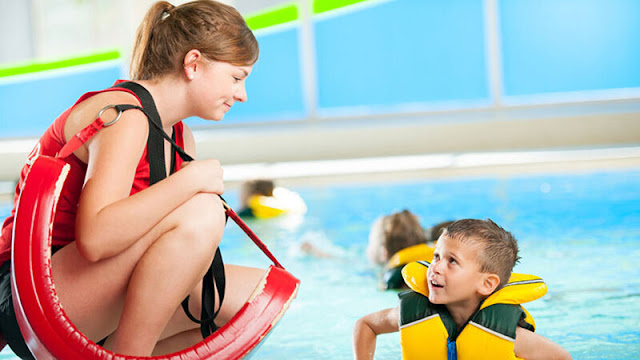Swimming is a very popular sport, which every year brings together thousands of participants, spectators, and other actors in its local, national, and international events. However, little is known about their specialty for people with disabilities. We talk about adapted swimming and its characteristics.
This swimming with lifeguard class online modality is regulated both by the International Swimming Federation – FINA, which also draws up its regulations – and by the International Paralympic Committee.
In general terms, and as we will see in the next section, the rules of adapted swimming are not too far from the conventional modality. However, some changes are made in response to the special needs of athletes.
This sport can be practiced by people with visual, physical, and intellectual disabilities. There is no doubt about something: it constitutes an essential space to guarantee the inclusion rights of these people.
Adapted swimming regulations
This form of swimming is also divided into male and female branches. Likewise, the same styles are carried out: front crawl or freestyle, backstroke, butterfly, and breaststroke.
The distances in which it competes are 50 meters, 100 meters, 200 meters, and 400 meters. Combined events, called medleys, and individual and collective tests, the famous 'posts', are also held.
Main characteristics of adapted swimming
Perhaps one of the most important differences with respect to conventional swimming has to do with starts. Depending on the disability that each competitor presents, this can be done from the starting platform standing or sitting, but also from inside the pool, as we can see in this event of the Rio 2016 Paralympic Games.
On the other hand, those who have hearing disabilities will receive the starting signal through a lighting device; the auditory method is used in a similar way with blind athletes. The pools have cranes for people with physical disabilities to access, of course.
Beyond these adaptations, athletes are not allowed to enter the pool with prostheses. This means that they have to move and fend for themselves, at least at the highest competitive levels. In the case of blind swimmers, they are warned with a signal when they approach a wall. These, however, are also padded.
Competition categories
Adapted swimming is divided into three categories, which are differentiated by the type of disability of their participants:
S1 – S10: athletes with physical disabilities. Those in grade 1 are those with the greatest disability, while those in grade 10 are those with the lowest level of disability.
S11 – S13: visually impaired competitors. As in the previous case, they are ordered from greater to a lesser degree of disability.
S14: swimmers with intellectual disabilities.
It is necessary to clarify that the letter 'S' before the number indicates that it is about freestyle, backstroke, and butterfly, while 'SB' ( breaststroke ) refers to breaststroke and 'SM' to combine.
As breaststroke is more complex, this category tends to be lower for some athletes. To establish the combinations for the medley, different formulas are used according to the degree of disability of the athlete.
The paralympic games
This is the event in which the best representatives of each country in adapted sports participate. A truly important fact about adapted swimming is that it was part of the first Paralympic Games in history, held in Rome in 1960. Since then, it has never left the Paralympic grid.
With regard to records, the most successful Paralympic swimmer in history is the American Trischa Zorn, who won 41 gold, 9 silver, and 5 bronze medals in 7 Paralympic Games. In Seoul 1988 she won no less than 12 medals.
It is worth noting that adaptive swimming offers great benefits for those who practice it since it is an excellent way to achieve satisfactory muscular rehabilitation. Of course, it offers all the benefits that we already know about this complete sport.
Likewise, it entails moments of socialization and inclusion, which is why it is a very interesting alternative for these people. Finally, it also has important components from the recreational, therapeutic and educational point of view. And also competing is the best way to improve yourself!







0 Comments